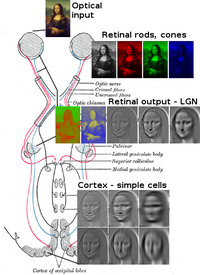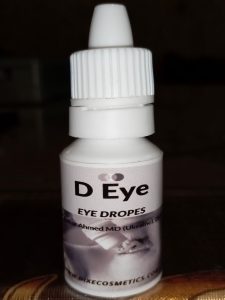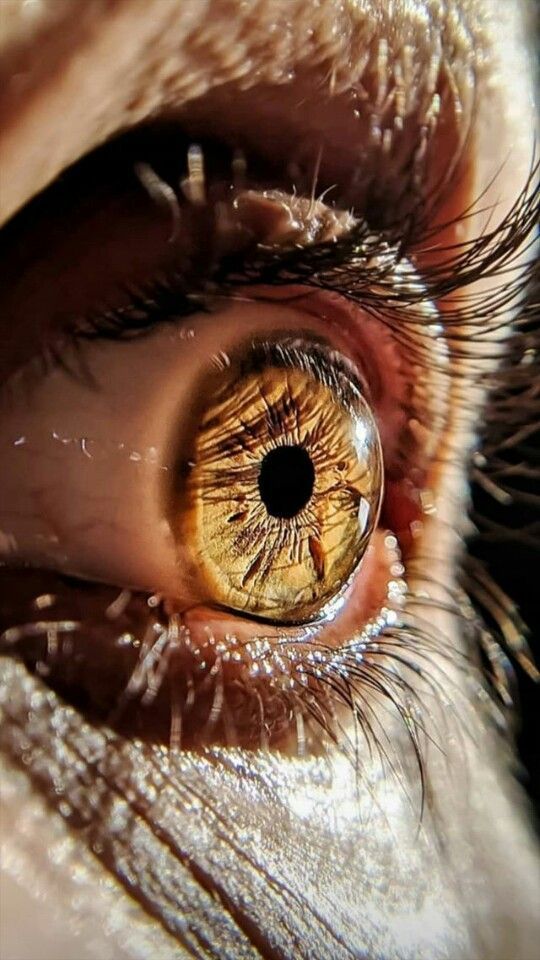Day blindness or Hemeralopia is a symptom in which vision is impaired in daytime (photonic conditions), whereas night vision (scotopic conditions) is preserved.
Thank you for reading this post, don't forget to subscribe!Etiology of Day Blindness or Hemeralopia:
The visual system consists of two components that are relatively independent of one another; The sensory organ, the eye ( (image sensor or camera – The retina and optic nerve – the transmission path) and parts of the central nervous system.
The retina containing photoreceptor cells, the optic nerve, the optic tract and the visual cortex which gives organisms the sense of sight (the ability to detect and process visible light) as well as enabling the formation of several non-image photo response functions. It detects and interprets information from the optical spectrum perceptible to that species to “build a representation” of the surrounding environment.
The neuropsychological side of visual information processing is known as visual perception, an abnormality of which is called visual impairment, and a complete absence of which is called blindness. Non-image forming visual functions, independent of visual perception, include (among others) the pupillary light reflex and circadian photoentrainment.
Humans are blind for about 40 minutes per day because of Saccadic masking—the body’s way of reducing motion blur as objects and eyes move. 20/20 isn’t perfect vision, it’s actually normal vision—it means you can see what an average person sees from 20 feet.
of Saccadic masking—the body’s way of reducing motion blur as objects and eyes move. 20/20 isn’t perfect vision, it’s actually normal vision—it means you can see what an average person sees from 20 feet.
Symptoms of Day Blindness or Hemeralopia
- Inability to see clearly in bright light
- Eye discomfort (Photophobia)
- Pain in light
- Inflammation of eye
Main causes of blindness
-
- Cone dystrophy (6-7 million, located in central portion of retina called
“Fovea”, responsible for photonic vision (bright-light vision)
and color perception, can resolve fine details). - Achromatopsia ( partial or total absence of color vision).
- Aniridia (abnormal development of the iris of the eye)
- Albinism (Albinism affects the production of melanin, the pigment that colors skin, hair and eyes).
- Cataract
- Genetic mutation at locus 8q22-23 chromosome
- Cone dystrophy (6-7 million, located in central portion of retina called
Treatment
In allopathy there is no any treatment except surgeries in some cases, but surgeries never gives good results; just waste of time, of too much money and collect lot of toxins inside your body especially liver (drugs side effects).
Homeopathic Treatment Day Blindness or Hemeralopia
Bothrops Lanceolatus
Amaurosis; blindness from hemorrhage into retina. Hemeralopia, day blindness, can hardly see her way after sunrise; conjunctival hemorrhage.
D Eye drops
Cataract, Keratitis with intense chemises of ocular conjunctiva, Sclera raised in patches, Stys and tarsal tumors, Suppurative inflammation of eyes, Photophobia, Spots before the vision, Blurred vision, Blindness, acrid lachrymation, Sticky mucus on cornea, Opacities, Catarrhal conjunctivitis, Pterygium. Thrombosis of retinal vessels and degenerative changes in retinal cells.
tumors, Suppurative inflammation of eyes, Photophobia, Spots before the vision, Blurred vision, Blindness, acrid lachrymation, Sticky mucus on cornea, Opacities, Catarrhal conjunctivitis, Pterygium. Thrombosis of retinal vessels and degenerative changes in retinal cells.
Silicea Terra
Angles of eyes affected. Swelling of lacrimal duct. Aversion to light, especially daylight; it produces dazzling, sharp pain through eyes; eyes tender to touch; worse when closed.
Vision confused; letters run together on reading. Stys. Iritis and iridoid-choroiditis, with pus in anterior chamber. Perforating or sloughing ulcer of cornea. Abscess in cornea after traumatic injury. Cataract in office workers. After-effects of keratitis and ulus cornea, clearing the opacity.
Nux Vomica
Photophobia; much worse in morning. Smarting dry sensation in inner canthi. Infraorbital neuralgia, with watering of eyes. Optic nerve atrophy, from habitual use of intoxicants. Paresis of ocular muscles; worse, tobacco and stimulants. Orbital twitching radiating towards the occiput, Optic neuritis.
Phosphorus
Cataract. Sensation as if everything were covered with a mist or veil, or dust, or something pulled tightly over eyes. Black points seem to float before the eyes. Patient sees better by shading eyes with hand. Fatigue of eyes and head even without much use of eyes. Green halo about the candlelight (Osmium). Letters appear red. Atrophy of optic nerve.
Edema of eyelids and about eyes. Pearly white conjunctiva and long curved lashes. Partial loss of vision from abuse of tobacco, Pain in orbital bones. Paresis of extrinsic muscles. Diplopia, due to deviation of the visual axis. Amaurosis from sexual excess. Glaucoma. Thrombosis of retinal vessels and degenerative changes in retinal cells. Degenerative changes where soreness and curved lines are seen in old people. Retinal trouble with lights and hallucination of vision.
Physostigma
Eyes inflamed, sclerotic dry, red, and swollen; eyeballs pain and smart; lids feel sore. Eyes bloodshot all the forenoon, with burning in them. Pain on attempting to use binocular vision, as in reading, so that one eye must be closed. Pressure; with muscae volitantes, dark and light long worms or snakes, also tremulous vision. Bright marks when looking at an object; dark yellowish spots covering one or two letters when reading.
Sharp, shooting pains, and drawing, twisting sensation in eyes. Eyes sore and painful when moved from side to side. Pain deep in, over top of eyeball. Sharp stitches in eyeball feels better in open air. The muscularis internus seems not to do its work rightly, and the axis of the eyes differs in each; eyes feel weak, with lachrymation. Eyes convulsed. Sight blurred, hazy, or misty, film over eyes; objects mixed; after which dull pain over the eyes and between the eyes.
Aching in posterior part of orbit, extending back into the brain causing nausea.-Lids heavy; cannot bear to raise them; twitching of lids. Contracted sensation in lids with difficulty in opening them and lacrimation when wide open, difficulty in keeping eye open. Tight feeling in ciliary region as if something were creeping about in it, with sharp pain. Contraction of pupils; in morning; by small and rapid jerks, with sensitiveness to light; then mydriasis feels better in morning, seeming to depend on fatigue of sphincter, which was worse during day by reflex stimulus of light. Pupils dilated. Pupils contracted when asleep, dilated when aroused. Disturbed accommodation; approximation of far point (myopia) and also of near point (the accommodation recovers before the pupil). Vision abnormally acute; double; dim and indistinct; blurred, hazy, misty. Lens dislocated by blow.
China Officinalis
Blue color around eyes. Hollow eyes. Yellowish sclerotic. Black specks, bright dazzling illusions; night blindness in anemic retina. Spots before eyes. Photophobia. Distortion of eyeballs. Intermittent ciliary neuralgia. Pressure in eyes. Amaurosis; scalding lachrymation.
Natrum Sulphuricum
Heaviness of eyelids, as if weights were on them. Itching on edges of lids mornings. Aching in eyes, especially in evening, when reading by candlelight. Tearing pain rounds eye. Burning in eyes with great dryness, or profuse lachrymation (with discharge of burning water, with dimness of sight). Dimness of sight, from weakness of eyes. Confused sight. Sparks before eyes, after blowing nose. Photophobia.
Belladonna
Throbbing deep in eyes on lying down. Pupils dilated (Agnus). Eyes feel swollen and protruding, staring, brilliant; conjunctiva red; dry, burn; photophobia; shooting in eyes. Exophthalmos. Ocular illusions; fiery appearance. Diplopia, squinting, spasms of lids. Sensation as if eyes were half closed. Eyelids swollen. Fundus congested.
Magnesium Phos
Double vision (horizontal); sparks; rainbow colors; photophobia. Pupils contracted. Dark spots before eyes on attempting to read. Dull vision from weakness of optic nerve. Nystagmus; strabismus, spasmodic; ptosis. Neuralgia: supra-orbital or orbital; intermittent, darting, lightning-like pains, exquisitely sensitive to touch; with increased lacrimation. Itching and heat in lower lid.
Ocimum
Glaucoma; with iridescent vision. Violent supra and infraorbital neuralgia; violent pains and lachrymation. Green colors surround candle-light. Conjunctivitis. Increase in intraocular tension, dim sight, photophobia.
Ranunculus Bulbosus for Day Blindness or Hemeralopia
Day-blindness; mist before eyes; pressure and smarting in eyes, as from smoke. Pain over right eye; better, standing and walking. Herpes on cornea. Vesicles on cornea, with intense pain, photophobia, and lachrymation.
Pulsatilla
Affections in general appearing on the cornea; margins of the eyelids; dim-sightedness, with a sensation as though there were something over the eye which the patient wishes to rub away; amaurosis; cataract. Pain in eyes as if scratched with a knife. Burning sensation, precisive pain as if caused by sand; or sharp or shooting pain in eyes, or else boring and incisive pain. Burning itching in eyes, chiefly in evening (inducing rubbing and scratching).
Inflammation in eyes and margins of lids (and Meibomian glands), with redness of the sclerotic and conjunctiva, and copious secretion of (thick) mucus (and nightly agglutination). Swelling and redness of eyelids. Trichiasis in eyelid. Stys, esp. on upper lid. Crystalline lens clouded and of a greyish color. Sty with inflammation of sclerotic, and tensive drawing pains on moving the muscles of the face. Dryness of eyes and lids, especially during sleep.
Profuse lachrymation, principally in the wind, as well as in open air, in the cold, and in clear, bright daylight. Acrid and corrosive tears. Abscess near angle of eye, like a lachrymal fistula (discharging pus on pressing it). Nocturnal agglutination of lids. Pupils contracted or dilated. Amaurosis; paralysis of optic nerve. Look fixed and stupid. Dimness of sight, especially or, getting warm from exercise.
Cloudiness of eyes and loss of sight, sometimes with paleness of face and inclination to vomit; (all objects present a sickly hue). Loss of sight in twilight, with sensation as if eyes were covered with a band. Sight confused, as if directed through a mist, or as if caused by something removable by rubbing, principally in open air, in evening, in morning, or on waking. Incipient cataract. Diplopia. Luminous circles before eyes, and diffusion of light of candles. Great sensibility of eyes to light, which causes lancinating pains (and in sunshine).
Conium Maculatum
Aching of the eyes when reading. Itching below the eyes, with burning and smarting pain when they are rubbed. Sensation of cold, or burning, in the eyes, when walking in the open air. Inflammation and redness of the sclerotic. Hordeolum. (Specks in the cornea.). Cataract from contusion. Short sightedness. Yellow color of the sclerotic. Eyes dull. Eyes prominent.
Momentary blindness by day in the brightness of the sun. Myopia. Presbyopia. Diplopia. The lines seem to move while reading. Black spots and colored bands before the sight, in a room. Red appearance of objects. Dazzling of the sight by the daylight. Aversion to light without inflammation of the eyes. Photophobia, with pale red color of the ball of the eyes.
For consultation about Day Blindness or Hemeralopia, Eye Infection or Allergies, visit our clinic.
To order medicine by courier, please send your detailed symptoms at WhatsApp– +92319884588
 Dr. Sayyad Qaisar Ahmed (MD {Ukraine}, DHMS) ; senior research officer Dnepropetrovsk state medical academy Ukraine; is a leading Homeopathic physician practicing in Al-Haytham clinic, Umer Farooq Chowk Risalpur Sadder (0923631023, 03119884588), K.P.K, Pakistan.
Dr. Sayyad Qaisar Ahmed (MD {Ukraine}, DHMS) ; senior research officer Dnepropetrovsk state medical academy Ukraine; is a leading Homeopathic physician practicing in Al-Haytham clinic, Umer Farooq Chowk Risalpur Sadder (0923631023, 03119884588), K.P.K, Pakistan.
Find more about Dr. Sayyad Qaisar Ahmed at :
https://www.youtube.com/Dr Qaisar Ahmed
https://www.facebook.com/dr.qaisar.dixecosmetics
